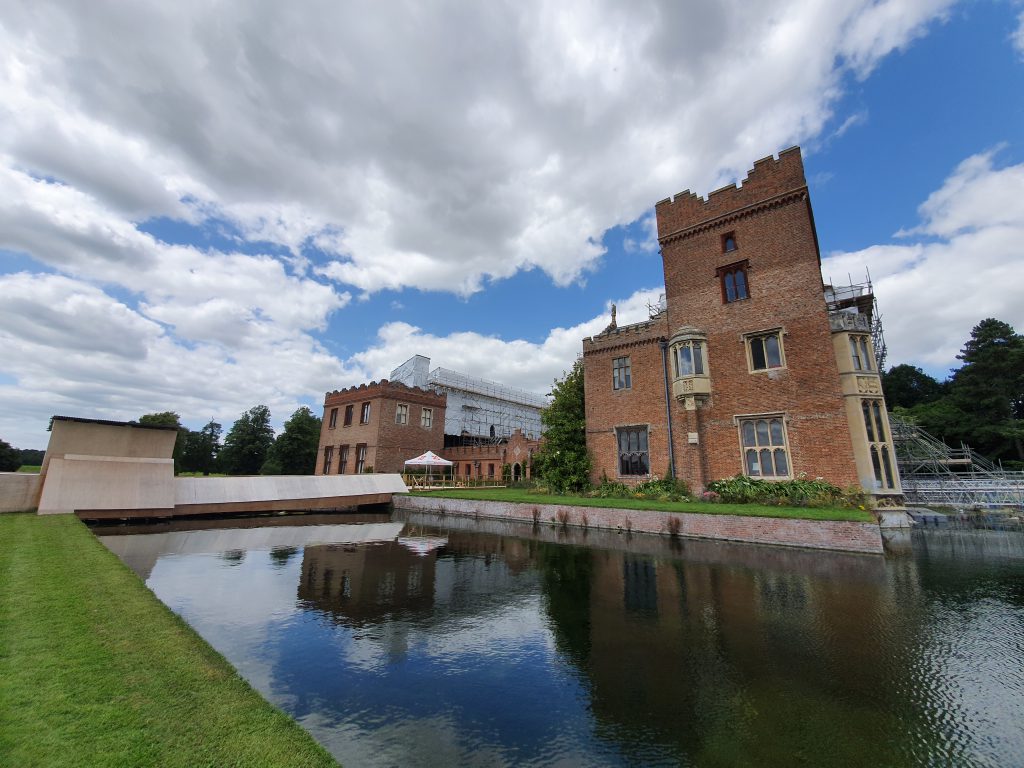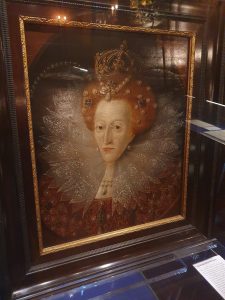Oxborough – Oxburgh Hall (Portrait of Queen Elizabeth)
The National Trust seem to have placed this seventeenth-century painting, of artist unknown, on display here to make the point that “the pressure to make yourself look beautiful without understanding the consequences is not just a twenty-first century issue”. They’re making reference to the makeup that Queen Elizabeth I (1533-1603) used to look pale, which was made of what transpired to be poisonous white lead which caused hair loss.
I’m not entirely sure that the first thing I thought about when looking at this painting was the Monarch’s make-up, and perhaps the National Trust have fallen into the same trap of managing to say nothing about her achievements, but it is undeniable that Elizabeth’s appearance changed over the decades.
When she was young it was said about her that:
“Her figure and face are very handsome; she has such an air of dignified majesty that no-one could ever doubt that she is a queen”.
However, by the time she was in her sixties, another correspondent noted:
“Her face is oblong, fair but wrinkled; her eyes small, yet black and pleasant; her nose a little hooked; her teeth black (a fault the English seem to suffer from because of their great use of sugar); she wore false hair, and that red”.
Ignoring the Monarch’s appearance, Queen Elizabeth I certainly knew how to control her court, and was able to maintain her position on the throne from 1558 until her death in 1603. She was able to maintain the Protestant faith, albeit making slight concessions to Catholicism, and her foreign policy was to a large part successful.
But, back to the National Trust’s focus on appearance, it’s true that Elizabeth was concerned about this. It is reported that it could take four hours a day to dress and undress the Queen, which seems to be an unreasonably proportion of time. In addition to the white lead and vinegar skin-care, she also spent time coloring her lips with beeswax and plant dye.
Elizabeth I also suffered from depression and significant health problems throughout her life, with one of her better-known quotes being:
“I know I have the body of a weak and feeble woman, but I have the heart and stomach of a king, and of a king of England, too.”



